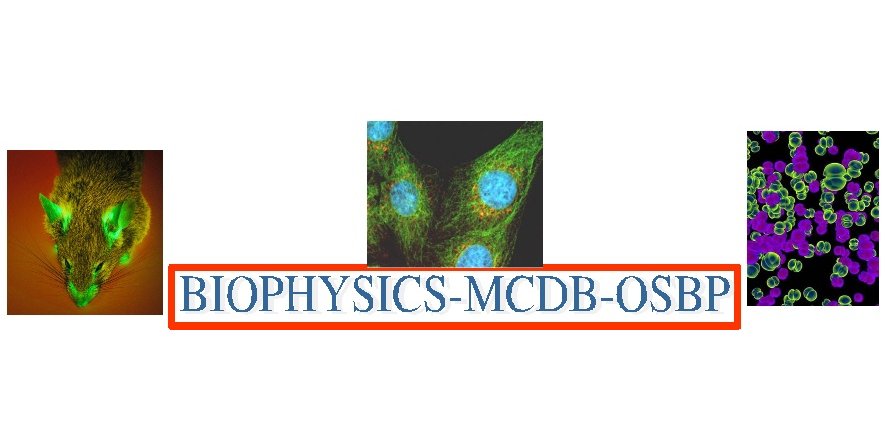Interdisciplinary Graduate Programs Symposium

2010 OSU Molecular Life Sciences
Interdisciplinary Graduate Programs Symposium

Poster abstracts
Abstract:
In eukaryotes, tRNAs are transcribed in the nucleus and functions in the cytoplasm. tRNAs in yeasts and vertebrate cells move bidirectionally and reversibly between the nucleus and the cytoplasm. tRNA nuclear export utilizes at least two members of the β-importin family. In vertebrate cells Exportin-t (Exp-t) functions in tRNA nuclear export via the Ran pathway. Our data show that the yeast orthologue of Exp-t, Los1, functions in both the tRNA primary export and the tRNA reexport processes. Exportin-5/Msn5 functions in nuclear export of micro-RNAs in metazoans and in nuclear export of particular phosphorylated nucleus/cytoplasmic shuttling proteins in yeast. Our data show that Msn5 is unable to export tRNAs in the primary round of export if the tRNAs are encoded by intron-containing tRNA, supporting the model that Msn5 functions solely in the reexport to the cytoplasm. To study the mechanism of Msn5 in tRNA nuclear reexport, we are attempting to identify its binding partners in vivo. One possible binding partner is Tef1/2. TEF1 and TEF2 encode identical eukaryotic translation elongation factor 1 alpha. Tef1/2 binds aminoacyl-tRNAs and function in delivering aa-tRNA to ribosomes. Several lines of evidence have implicated Tef1/2 in tRNA nuclear-cytoplasmic dynamics: TEF2 was identified as a multicopy suppressor of los1Δ, tef1Δlos1Δ, and tef1Δmsn5Δ strains have synthetic growth defects, and tef2 mutants accumulate nuclear pools of tRNA. If Tef1/2 functions directly in tRNA reexport, then there should be nuclear pools of these proteins. Our studies show that in wild-type strains, Tef1-GFP is excluded from the nucleus, while in msn5Δ cells Tef1-GFP is localized in both cytoplasm and nucleus. This result suggests that Msn5 is responsible for exporting Tef1 from the nucleus and may be involved in the tRNA reexport process. To further investigate the interaction of Tef1 and Msn5, we are assessing whether a Msn5•Tef1/2•aa-tRNA•Ran-GTP complex assembles for tRNA reexport.
References:
Grosshans, H., Hurt, E., and Simos, G. (2000). An aminoacylation-dependent nuclear tRNA export pathway in yeast. Genes Dev 14, 830-840.
Hopper, A.K., and Shaheen, H.H. (2008). A decade of surprises for tRNA nuclear-cytoplasmic dynamics. Trends Cell Biol 18, 98-104.
McGuire, A.T., and Mangroo, D. (2007). Cex1p is a novel cytoplasmic component of the Saccharomyces cerevisiae nuclear tRNA export machinery. EMBO J 26, 288-300.
Murthi, A., Shaheen, H.H., Huang, H.Y., Preston, M.A., Lai, T.P., Phizicky, E.M., and Hopper, A.K. (2010). Regulation of tRNA bidirectional nuclear-cytoplasmic trafficking in Saccharomyces cerevisiae. Mol Biol Cell 21, 639-649.
Keywords: tRNA nuclear reexport